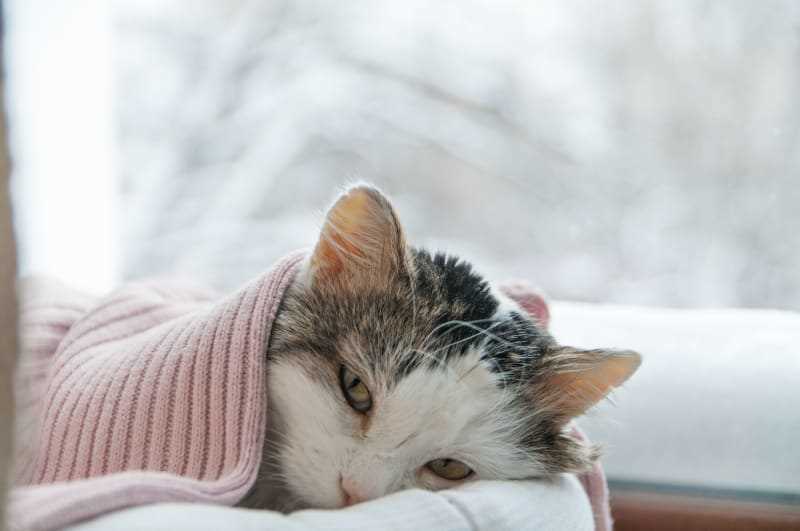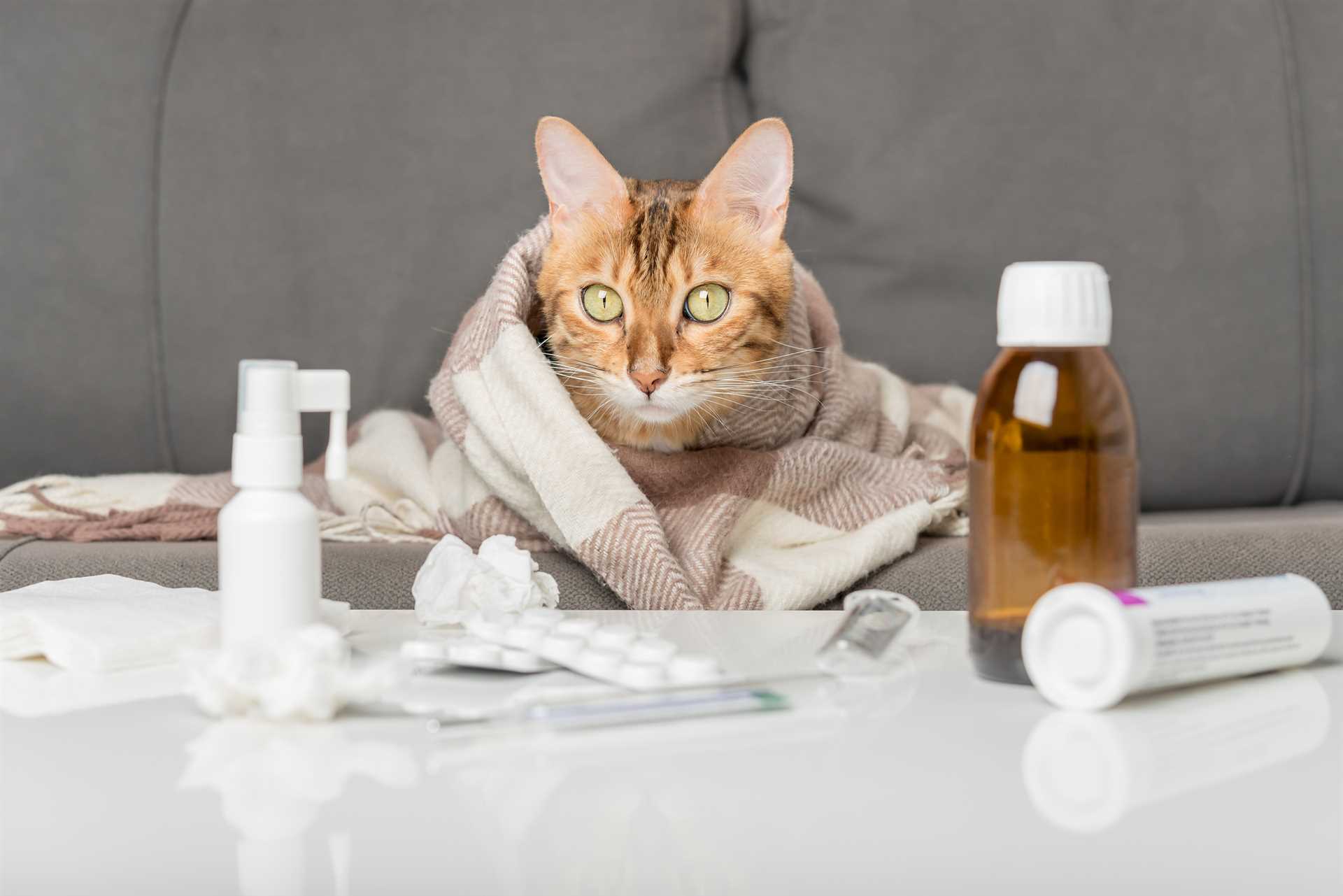



If your feline companion is feeling under the weather, a warm and cozy environment is a must. Ensure the space is quiet and free from drafts, allowing for maximum comfort during recovery. Adding a soft blanket or a favorite bed can make a significant difference in their mood.
Hydration is crucial. Encourage drinking by providing fresh water frequently. A little chicken broth (without onions or garlic) can entice them to sip more. Wet food is also a great option, as it contains additional moisture, helping to keep them hydrated.
Consider a humidifier in the room. It helps ease breathing by adding moisture to the air. This can be especially relieving for a stuffy nose. Alternatively, a warm bath can provide temporary relief, but ensure the temperature is comfortable and not too hot.
Monitor for any changes in behavior or symptoms. If the situation doesn’t improve within a few days, a visit to the vet is advisable. They can provide tailored advice or medications to support recovery. Watching over a beloved pet is a responsibility I take seriously, and finding ways to help them feel better is always my priority.
Suggestions for a Feline with a Respiratory Infection
Warm, clear liquids like chicken broth can help keep hydration levels up. This is comforting and encourages sipping more fluids.
Humidifiers in the room provide moist air, easing breathing. Creating a cozy spot with a warm blanket allows for relaxation and rest.
Soft, wet food is easier to consume, especially when appetite wanes. Look for options rich in nutrients to support recovery.
Consulting with a veterinarian about safe medications can provide symptomatic relief. They might recommend specific treatments tailored to individual needs.
Frequent monitoring of symptoms is essential. If breathing becomes labored or lethargy increases, a vet visit is necessary.
Lastly, ensuring a stress-free environment promotes healing. Gentle interaction and plenty of love go a long way during recovery.
Identifying Symptoms of a Cat Cold
Pay attention to the following signs if a feline companion is feeling under the weather:
Common Indicators
- Frequent sneezing or nasal discharge
- Coughing or wheezing sounds
- Watery or red eyes
- Lethargy, showing less interest in play
- Changes in appetite, either decreased or increased
- Fever, which may cause warmth to the touch
Behavioral Changes
- Seeking warmth or hiding more than usual
- Increased vocalization, indicating discomfort
- Grooming less, leading to a disheveled coat
Recognizing these symptoms early can help in managing the well-being of your furry friend. If several signs appear simultaneously or persist, consulting a vet is advisable for appropriate treatment and care.
Safe Home Remedies for Feline Respiratory Infections

Warm, humid air can provide relief. A steamy bathroom works well; just run the shower with hot water and let your furry friend inhale the moist air for about 10-15 minutes. This helps soothe irritated nasal passages.
Hydration is key. Always ensure fresh, clean water is accessible. Wet food can also aid in keeping hydration levels up, which is crucial for recovery.
Herbal Support
Some herbs like chamomile or peppermint can be beneficial. Brew a weak tea and let it cool. A few drops in their water bowl may provide soothing effects. Always check for any allergies before introducing new substances.
Nutrition Boost

Encouraging appetite is important. Offer warm, enticing meals to stimulate eating. Adding a bit of tuna juice or chicken broth can make food more appealing, helping maintain energy levels during recovery.
When to Consult a Veterinarian
If a feline companion shows signs of severe respiratory distress, such as difficulty breathing or persistent coughing, immediate veterinary attention is necessary. Additionally, if there is a lack of appetite lasting more than 24 hours or if the pet is lethargic and unresponsive, a visit to the clinic is warranted.
Accompanying Symptoms
Watch for fever, excessive nasal discharge, or eye problems. If these symptoms appear alongside sneezing, seek professional advice. Persistent or worsening symptoms may indicate a more serious condition requiring expert intervention.
Duration of Symptoms
If the symptoms last longer than a week without improvement, it’s time to consult a veterinarian. Early diagnosis can prevent complications and ensure a speedy recovery.
Importance of Hydration for Sick Felines
Keeping hydrated is critical for any ailing feline. Water aids in the recovery process, helping to flush out toxins and maintain overall bodily functions. Encourage drinking by providing fresh, clean water at all times. Consider using a pet water fountain, as the flowing water can entice a reluctant drinker.
Signs of Dehydration
Monitor for signs such as dry gums, lethargy, and loss of skin elasticity. If skin doesn’t quickly return to its normal position when gently pulled, it may indicate dehydration. If you notice these symptoms, increase fluid intake immediately.
Hydration Alternatives
If a furry friend isn’t drinking enough, offering low-sodium broth can be a great alternative. It’s flavorful and can encourage them to consume more fluids. Additionally, wet food can help boost hydration levels. Always consult a veterinarian if there are concerns about hydration or health. For general health, ensure to look into the best tapeworm medication for cats to maintain a healthy system.
It’s also wise to be cautious about environments. Indoor settings can be dry, especially during winter. Placing a humidifier can improve the air quality and help your companion feel more comfortable. If you’re considering pet safety outside, read about how effective are electric fences for dogs to ensure a safe space for outdoor exploration.
Choosing the Right Food for a Sick Feline
When feeling under the weather, the right nutrition plays a crucial role. Opt for easily digestible meals such as boiled chicken or turkey without any seasoning. These options are gentle on the tummy and provide essential protein.
Incorporating soft, wet food can enhance hydration and entice a reluctant eater. Look for high-quality canned options that include real meat as the primary ingredient. This ensures your furry friend receives necessary nutrients without extra fillers.
Consider adding a bit of plain pumpkin to meals. This natural remedy aids digestion and can soothe upset stomachs. Just a spoonful mixed into food can work wonders.
If your little one is still uninterested in food, try warming it slightly. A few seconds in the microwave can enhance the aroma, making it more appealing.
Consulting with a veterinarian before making any changes to diet is wise, especially if symptoms persist. They can recommend specialized diets tailored to recovery needs.
Using Steam and Humidity to Alleviate Symptoms
Steam can be a soothing remedy for those feeling under the weather. Creating a humid environment helps ease nasal congestion. Fill the bathroom with warm water and let the steam accumulate. Spend some time in there, allowing the steam to work its magic. Make sure to supervise during this process to ensure safety.
A humidifier in the living space is another effective approach. This device adds moisture to the air, which can relieve dryness in the nasal passages. Placing it in a cozy area where I like to rest can create a comfortable atmosphere that encourages easier breathing.
For a more direct method, consider using a bowl of hot water to generate steam. Position it securely in an area where I can benefit from the warm mist without getting too close. This can help clear airways and provide relief from discomfort.
It’s crucial to monitor the humidity levels. Too much moisture can lead to other issues, so keeping it balanced is key. A hygrometer can help track this, ensuring the environment remains pleasant.
| Method | Benefits |
|---|---|
| Bathroom Steam | Relieves nasal congestion, creates a warm environment |
| Humidifier | Maintains moisture in the air, eases breathing |
| Bowl of Hot Water | Direct steam application, helps clear airways |
Combining these methods can enhance comfort and promote recovery. Always ensure that the environment remains safe and pleasant for a smooth experience.
Monitoring Recovery and Ongoing Care
Daily observations are crucial. Keep an eye on behaviors and symptoms to track improvement or decline. Look for changes in appetite, energy levels, or any new signs of discomfort.
Daily Checklists
- Assess appetite: Is food being consumed regularly?
- Monitor hydration: Ensure water intake remains adequate.
- Observe activity: Is there an increase in playfulness or movement?
- Check nasal discharge: Is it clearing up or worsening?
Temperature checks can also provide insight. A normal range for felines is between 100.5°F and 102.5°F. If the temperature rises above this range, it may indicate a need for veterinary assistance.
Comfort and Environment
- Maintain a warm, quiet space for rest and recovery.
- Reduce stressors, such as loud noises or unfamiliar pets.
- Provide soft bedding for comfort during rest.
Regularly clean drinking and eating areas to prevent further illness. Keep an eye on litter box habits; changes can indicate health issues.
Consult a vet if signs do not improve within a few days or if symptoms worsen. Early intervention can make a significant difference in recovery outcomes.










